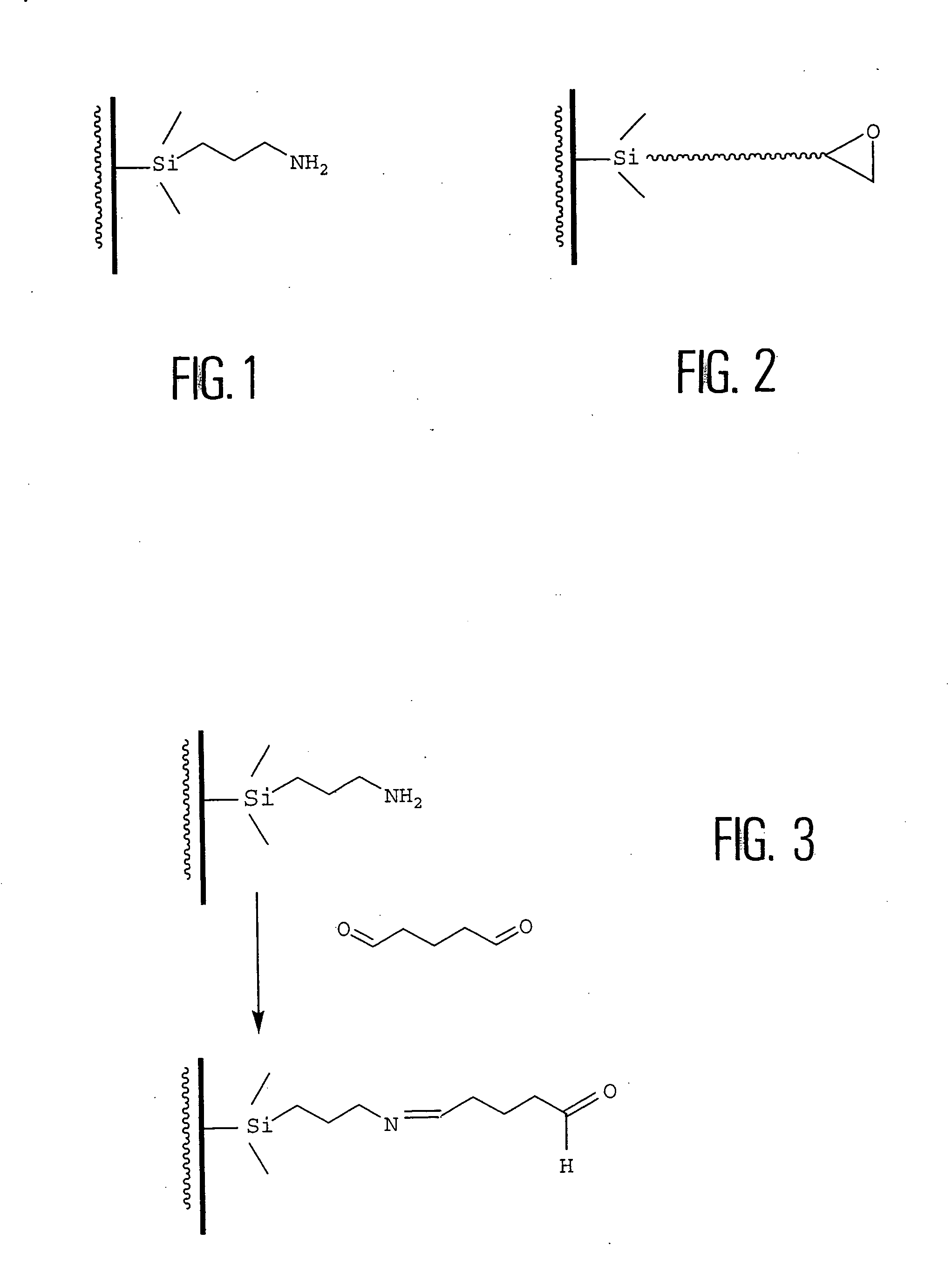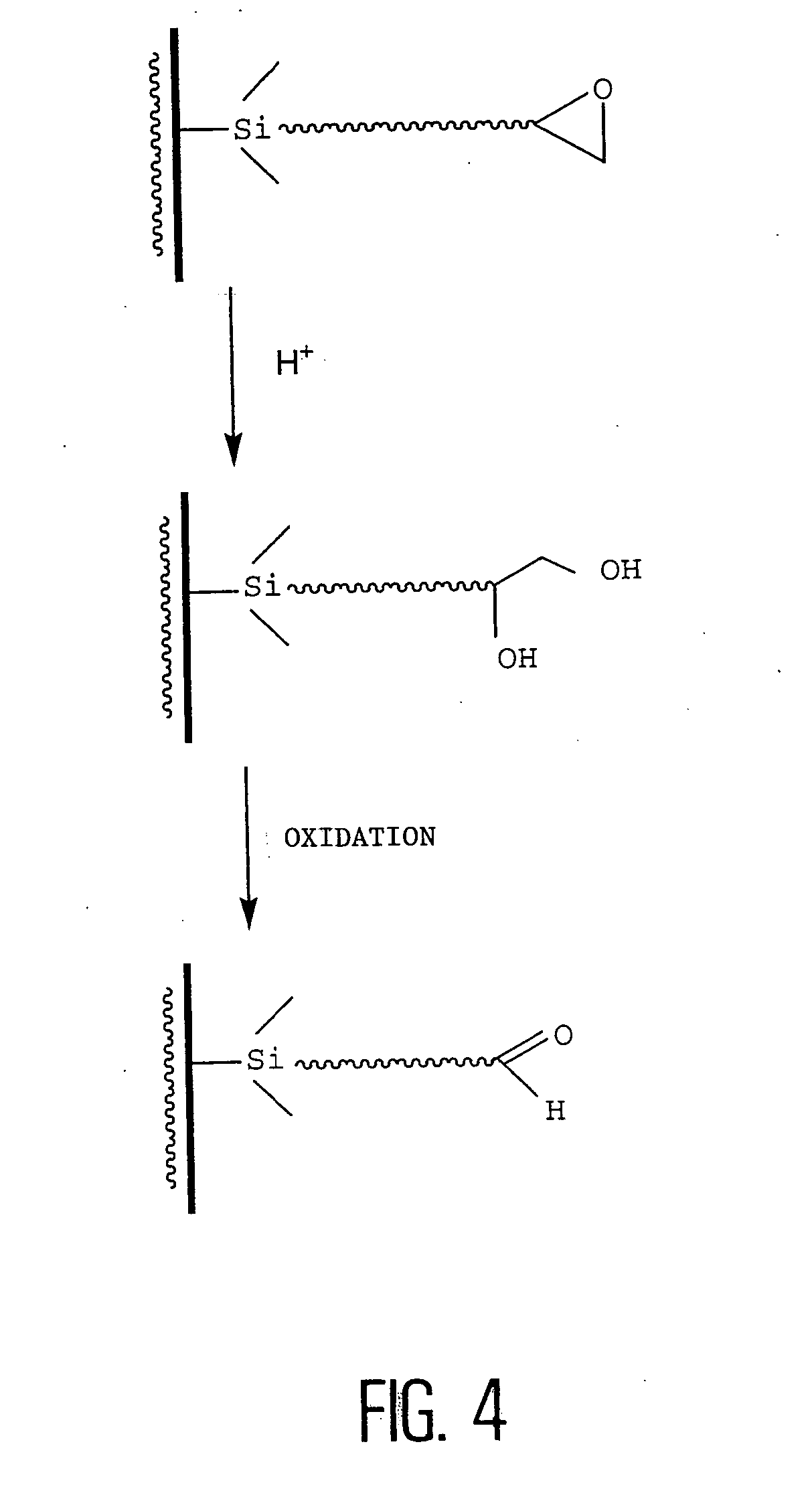Method of immobilizing probes, in particular for producing bio chips
a technology of immobilizing probes and probes, which is applied in the direction of biochemistry apparatus, carrier-bound/immobilised peptides, pharmaceutical non-active ingredients, etc., can solve the problems of purity of synthesized probes, limitation of methods, and inability to purify after synthesis
- Summary
- Abstract
- Description
- Claims
- Application Information
AI Technical Summary
Problems solved by technology
Method used
Image
Examples
Embodiment Construction
[0054] FIG. 4 is a diagram of obtaining an aldehyde function on a solid support from an epoxide function hydrolyzed to a diol, then oxidized to an aldehyde, according to the invention. The epoxide used is, for example, triethoxysilane glycidoxypropyl epoxide.
[0055] However, the inventors of the present invention have observed that, after the steps of cleaning, silanization, activation, and then hybridization, the results of fluorescence of the hybridization spots on the support are not very encouraging. This is not due to the hybridization step, since parallel manipulations performed on commercial sheets and aminated sheets gave better signal intensities.
[0056] The inventors therefore called into question, not the cleaning or silanization steps (which are effective in the case of in situ synthesis), but rather the activation step, that is, during the conversion of the epoxide function into an aldehyde and more precisely, the oxidation of the vicinal diol of the silane to an aldehyde...
PUM
| Property | Measurement | Unit |
|---|---|---|
| chemical binding function | aaaaa | aaaaa |
| chemical function | aaaaa | aaaaa |
| length | aaaaa | aaaaa |
Abstract
Description
Claims
Application Information
 Login to View More
Login to View More - R&D
- Intellectual Property
- Life Sciences
- Materials
- Tech Scout
- Unparalleled Data Quality
- Higher Quality Content
- 60% Fewer Hallucinations
Browse by: Latest US Patents, China's latest patents, Technical Efficacy Thesaurus, Application Domain, Technology Topic, Popular Technical Reports.
© 2025 PatSnap. All rights reserved.Legal|Privacy policy|Modern Slavery Act Transparency Statement|Sitemap|About US| Contact US: help@patsnap.com



